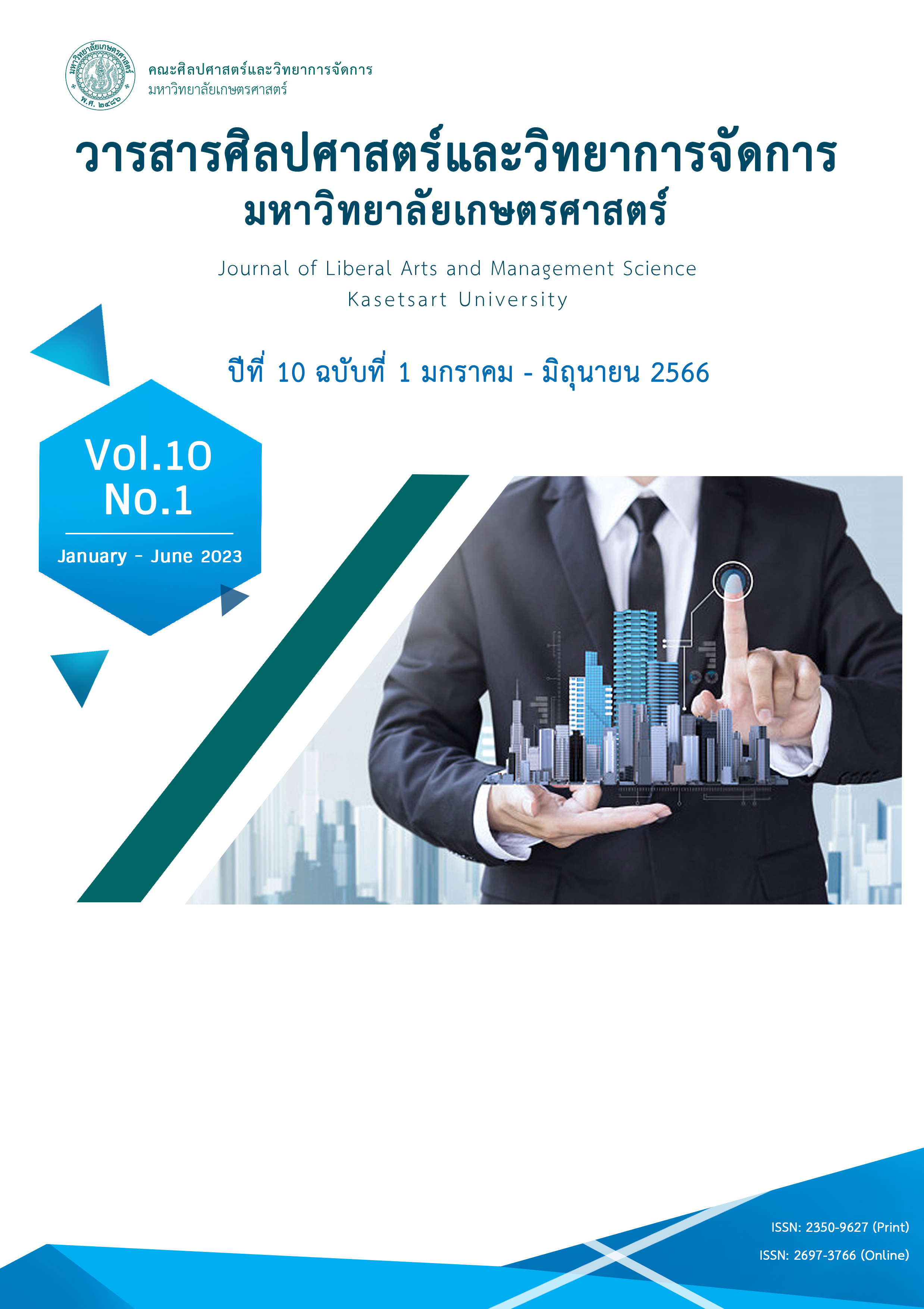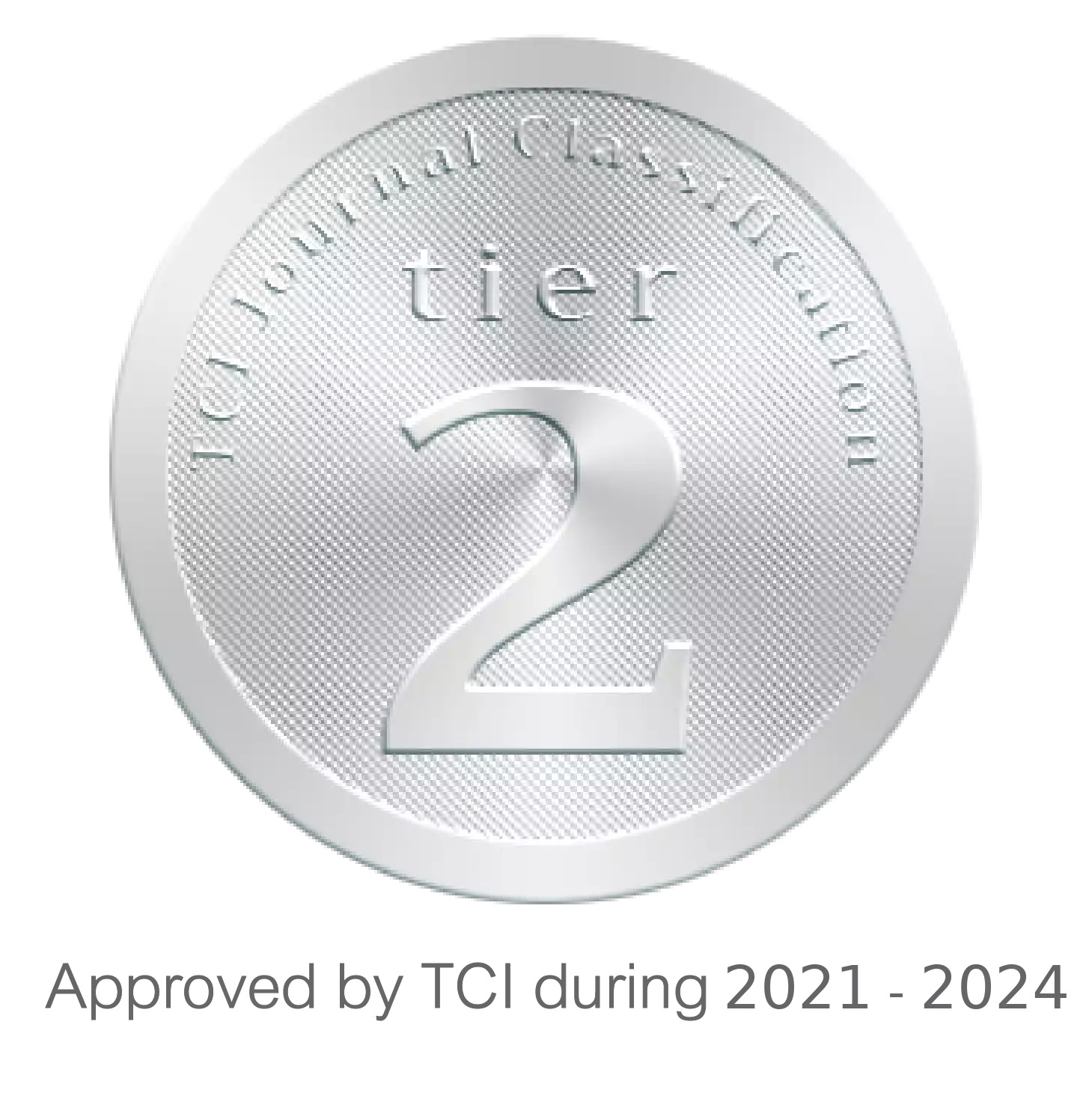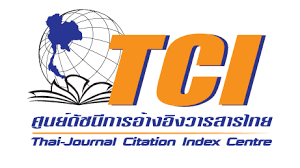อิทธิพลของภาพลักษณ์องค์กรที่ส่งผลต่อความตั้งใจใช้บริการและความจงรักภักดีของผู้ใช้บริการท่าอากาศยานในเขตภาคตะวันออกเฉียงเหนือตอนบน
THE INFLUENCES OF CORPORATE BRAND IMAGE TOWARDS CUSTOMERS’ INTENTION TO USE AND LOYALTY AT UPPER-NORTHEASTERN AIRPORTS
Keywords:
ภาพลักษณ์องค์กร, ความตั้งใจใช้บริการ, ความจงรักภักดี, ท่าอากาศยาน, สายการบินต้นทุนต่ำ, โมเดลสมการโครงสร้างAbstract
บทคัดย่อ
การวิจัยครั้งนี้มีวัตถุประสงค์ เพื่อ 1) ศึกษาระดับการรับรู้ของภาพลักษณ์องค์กร ความตั้งใจใช้บริการ และความจงรักภักดี ของสายการบินต้นทุนต่ำ 2) ศึกษาอิทธิพลของภาพลักษณ์องค์กรที่มีต่อความตั้งใจใช้บริการ และความจงรักภักดี ของสายการบินต้นทุนต่ำ 3) ศึกษาบทบาทความเป็นตัวแปรแทรกของความตั้งใจใช้บริการที่มีต่อภาพลักษณ์องค์กรและความจงรักภักดี โดยใช้แบบสอบถามเป็นเครื่องมือในการเก็บข้อมูลผู้ใช้บริการ ณ ท่าอากาศยานเขตภาคตะวันออกเฉียงเหนือตอนบนทั้งหมด 4 ท่าอากาศยาน จำนวน 399 คน หลังจากนั้นนำไปหาค่าความเชื่อมั่นโดยใช้วิธีหาค่าสัมประสิทธิ์แอลฟาของครอนบาค สถิติที่ใช้ในการวิเคราะห์ข้อมูล ได้แก่ ความถี่ ร้อยละ และการวิเคราะห์โมเดลสมการโครงสร้าง ผลการศึกษาพบว่า ผู้ตอบแบบสอบถามส่วนมากเป็นเพศหญิง 291 ราย (ร้อยละ 72.90) มีอายุระหว่าง 31-40 ปี 177 ราย (ร้อยละ 44.40) ระดับการศึกษาปริญญาตรี 271 ราย (ร้อยละ 67.90) ประกอบอาชีพข้าราชการ/พนักงานของรัฐ 191 ราย (ร้อยละ 47.90) รายได้เฉลี่ยต่อเดือน 15,001-25,00 บาท 189 ราย (ร้อยละ 47.40) และสายการบินที่ใช้บ่อยที่สุดภายใน 6 เดือน คือ นกแอร์ 276 ราย (ร้อยละ 64.50) ผลการทดสอบสมมติฐานพบว่า ภาพลักษณ์องค์กรของสายการบินมีอิทธิพลทางตรงเชิงบวกต่อความตั้งใจใช้บริการและความจงรักภักดีอย่างมีนัยสำคัญ และความตั้งใจใช้บริการมีอิทธิพลทางตรงเชิงบวกต่อความจงรักภักดีอย่างมีนัยสำคัญ สำหรับการทดสอบอิทธิพลของตัวแปรแทรกกลาง พบว่า ความตั้งใจใช้บริการเป็นตัวแปรแทรกกลางแบบบางส่วน
คำสำคัญ: ภาพลักษณ์องค์กร ความตั้งใจใช้บริการ ความจงรักภักดี ท่าอากาศยาน สายการบินต้นทุนต่ำ โมเดลสมการโครงสร้าง
Abstract
This research aims 1) to study the perceived level of corporate brand image, intention to use, and customer loyalty of low-cost airlines, 2) to study the influences of the corporate brand image on intention to use and customer loyalty of low-cost airlines, 3) to investigate the mediating role of intention to use in the relationship between corporate brand image and customer loyalty. Using the questionnaire as a tool for collecting data, 399 customers were included in this study. Data collection was done at the four Upper-Northeastern airports as Nakhonphanom Airport, Loei Airport, Sakon Nakhon Airport, and Udonthani International Airport. After that, the reliability of the questionnaires was tested using Cronbach’s alpha coefficient. The statistics applied for data analysis include frequency, percentage, and structural equation models. The results reveal that out of 399 respondents, the majority are 291 female respondents (72.90%), aged between 31-40 years old with 177 respondents (44.40%), graduated Bachelor’s degree with 271 respondents (67.90%), occupied as government officers with 191 respondents (47.90%), earned average monthly income 15,001-25,000 Baht with 189 respondents (47.40%), and the most often used airline within the last six months is Nok Air with 276 respondents (64.50%). The results of hypothesis testing shows that the corporate brand image of low-cost airlines significantly demonstrated a positive linear relationship with customers’ intention to use and loyalty. Furthermore, the intention to use also positively influences customer loyalty. Concerning the role of the mediator, customers’ intention to use is found to be partial mediation.
Keywords: corporate brand image, intention to use, customer loyalty, airport, low-cost airline, structural equation model
Downloads
References
เปรมฤดี จิตรเกื้อกูล. (2560). บทบาทของความน่าเชื่อถือของตราสินค้าในการเป็นตัวแปรแทรกระหว่างความคุ้นเคยต่อตราสินค้าและทัศนคติที่มีต่อตราสินค้าเพื่อสิ่งแวดล้อม. ศรีปทุมปริทัศน์ฉบับมนุษยศาสตร์และสังคมศาสตร์.
นิรัชยา เลิศเรืองฤทธิ์. (2559). การรับรู้คุณค่าตราสินค้าและพฤติกรรมที่มีต่อสายการบินต้นทุนตํ่า ของผู้โดยสารชาวไทย: กรณีศึกษาสายการบินไทยแอร์เอเชีย (ปริญญานิพนธ์ปริญญามหาบัณฑิต). มหาวิทยาลัยธรรมศาสตร์. กรุงเทพฯ.
สำนักงานเลขาธิการวุฒิสภา. (2565). รายงานการพิจารณาศึกษาเรื่องมาตรการสนับสนุนสายการบินของไทยภายใต้นโยบายการเปิดน่านฟ้าเสรี. สืบค้นเมื่อ 20 เมษายน 2566, จาก https://www.senate.go.th/document/ Ext27141/27141728_0002.PDF
Agmeka, F., Wathoni, R.N., & Santoso, A.S. (2019). The influence of discount framing towards brandreputation and brand image on purchase intention and actual behaviour in e-commerce. Procedia Computer Science, 161, 851-858.
Alam, M., & Noor, N. (2020). The relationship between service quality. corporate image, and customer loyalty of generation Y: an application of S-O-R paradigm in the context of superstores in Bangladesh. Sage Open, 10(2).
Baker, D. Mc. A., (2013). Service quality and customer satisfaction in the airline industry: A comparison between legacy airlines and low-cost airlines. American Journal of Tourism Research, 2(1), 67-77.
Balmer, J. M., Lin, Z., Chen, W., & He, X. (2020). The role of corporate brand image for B2B relationships of logistics service providers in China. Journal of Business Research, 117, 850-861.
Bentler, P. M. (1992). On the fit of models to covariances and methodology to the Bulletin. Psychological bulletin, 112(3), 400.
Bergkvist, L., & Rossiter, J. R. (2007). The predictive validity of multiple-item versus single-item measures of the same constructs. Journal of marketing research, 44(2), 175-184.
Bowen, J. T., & Shoemaker, S. (2003). Loyalty: A strategic commitment. The Cornell Hotel and Restaurant Administration Quarterly, 44(5-6), 31-46.
Byrne, B. M. (2013). Structural equation modeling with AMOS: Basic concepts, applications, and programming. Routledge.
Callarisa, L., Garcı´a, J.S., Cardiff, J., & Roshchina, A. (2012). Harnessing social media platforms to measure customer-based hotel brand equity. Tourism Management Perspectives, 4, 73-79.
Chan, V., Chiu, D., & Ho, K. (2022). Mediating effects on the relationship between perceived service quality and public library app loyalty during the COVID-19 era. Journal of Retailing and Consumer Services, 67, 102960.
Chin, W. W. (1998). The partial least squares approach to structural equation modeling. Modern methods for business research, 295(2), 295-336.
Cronbach, L. J. (1974). Consistency and Stability of Interaction Effects from Classroom to Classroom. Pilot Studies.
Eun-Ju S., & P. Jin-Woo. (2017). A Study on the Impact of Airline Corporate Reputation on Customer loyalty. International Business Research, 10(1), 59-67.
Fornell, C., & Larcker, D. F. (1981). Evaluating structural equation models with unobservable variables and measurement error. Journal of marketing research, 18(1), 39-50.
Fu, Y. K. (2023). Airline brand image, passenger perceived value and loyalty towards full-service and low-cost carriers. Tourism Review, (ahead-of-print).
Gronholdt, L., Martensen, A., & Kristensen, K. (2000). The relationship between customer satisfaction and loyalty: cross-industry differences. Total quality management, 11(4-6), 509-514.
Hair, J. F., Black, W. C., Babin, B. J., & Anderson, R. E. (2010). Multivariate data analysis. Prentice Hall.
Hair, J. F., Hult, G. T. M., Ringle, C. M., & Sarstedt, M. (2014). A Primer on Partial Least Squares Structural Equation Modeling. Thousand Oaks: Sage.
Han, H., Lee, K. S., Chua, B. L., Lee, S., & Kim, W. (2019). Role of airline food quality, price reasonableness, image, satisfaction, and attachment in building re-flying intention. International Journal of Hospitality Management, 80, 91-100.
Han, H., Yu, J., Chua, B.L., Lee, S., & Kim, W. (2019). Impact of core-product and service-encounter quality, attitude, image, trust and love on repurchase: full-service vs low-cost carriers in South Korea. International Journal of Contemporary Hospitality Management, 33(4), 1588-1608.
Hirschman, A.O. (1970). Exit, Voice, and Loyalty: Responses to Decline in Firms, Organizations, and States. Harvard University Press: Cambridge, MA, USA.
Hu, L. T., & Bentler, P. M. (1999). Cutoff criteria for fit indexes in covariance structure analysis: Conventional criteria versus new alternatives. Structural equation modeling: a multidisciplinary journal, 6(1), 1-55.
Keller, T. (2003). Parental images as a guide to leadership sensemaking: An attachment perspective on implicit leadership theories. The Leadership Quarterly, 14(2), 141-160.
Lardinoit, T., & Derbaix, C. (2001). Sponsorship and recall of sponsors. Psychology & Marketing, 18(2), 167-190.
Liang, J. K., Eccarius, T., & Lu, C. C. (2022). Investigating re-use intentions for shared bicycles: A loyalty phase perspective. Research in Transportation Business & Management, 43, 100696.
Likert, R. (1932). A technique for the measurement of attitudes. Archives of psychology.
Oliver, R. L. (1999). Whence consumer loyalty?. Journal of marketing, 63(4_suppl1), 33-44.
Raza, M., Salleh, S., Tariq, B., Altayyar, R., & Shaari, H. (2020). Investigating the effects of customer-based brand equity on turnover intentions with mediating effect of customer citizenship behavior. Management Science Letters, 10(2), 279-286.
Schreiber, J. B., Nora, A., Stage, F. K., Barlow, E. A., & King, J. (2006). Reporting structural equation modeling and confirmatory factor analysis results: A review. The Journal of educational research, 99(6), 323-338.
Singh, G., Slack, N., Sharma, S., Mudaliar, K., Narayan, S., Kaur, R., & Sharma, K.U. (2021). Antecedents involved in developing fast-food restaurant customer loyalty. The TQM Journal, 33(8), 1753-1769.
Tabachnick, B. G., Fidell, L. S., & Ullman, J. B. (2013). Using multivariate statistics (Vol. 6, pp. 497-516). Boston, MA: pearson.
Wang, Y. H., & Tsai, C. F. (2014). The relationship between brand image and purchase intention from award winning mutual funds. The International Journal of Business and Finance Research, 8(2), 27-40.
White, K. J. (1992). The Durbin-Watson test for autocorrelation in nonlinear models. The Review of Economics and Statistics, 370-373.
Wu, L. (2011). Satisfaction, inertia, and customer loyalty in the varying levels of the zone of tolerance and alternative attractiveness. Journal of Services Marketing, 25(5). 310-322.
Yang, K. C., Hsieh, T. C., Li, H., & Yang, C. (2012). Assessing how service quality, airline image and customer value affect the intentions of passengers regarding low-cost carriers. Journal of Air Transport Management, 20, 52-53.







